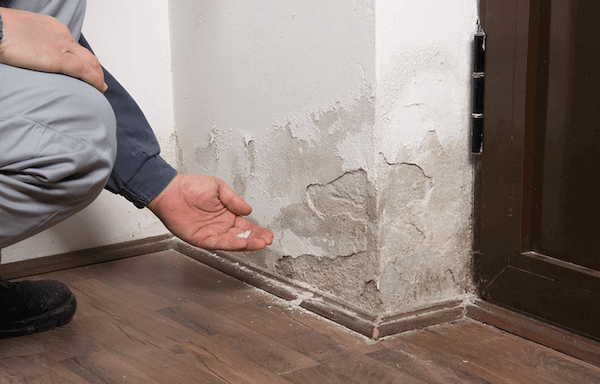The content which follows in relation to What You Can Do At Home To Prevent Fire And Water Damage is exceptionally enlightening. Check it out yourself and figure out what you think of it.

Though water offers life, water intrusion on parts where it's not supposed to be can lead to damage. If the water saturates into your framework, it can peel away surface areas and also deteriorate the structure. Mold and mildew as well as mold also grow in a moist atmosphere, which can be hazardous for your health. Houses with water damage smell mildewy and old.
Water can come from many sources such as tropical cyclones, floods, burst pipes, leakages, and also sewage system issues. In case you experience water damage, it would certainly be great to understand some safety precautions. Right here are a couple of standards on exactly how to handle water damage.
Do Prioritize Residence Insurance Coverage Insurance Coverage
Water damage from flooding because of heavy winds is seasonal. Nonetheless, you can likewise experience an unexpected flooding when a malfunctioning pipe unexpectedly bursts into your home. It would be best to have house insurance that covers both disasters such as all-natural disasters, and also emergencies like busted plumbing.
Don't Neglect to Shut Off Energies
In the event of a catastrophe, particularly if you live in a flood-prone area, it would be suggested to shut off the main electric circuit. This cuts off power to your entire home, stopping electrical shocks when water comes in as it is a conductor. In addition, don't forget to switch off the primary water line valve. When floodwaters are high, furniture will move and also create damage. Having the major valve turned off stops more damages.
Do Keep Proactive and also Heed Weather Notifies
Pay attention to emptying warnings if you live near a creek, river, or lake. Doing so reduces possible residential property damage.
Don't Disregard the Roof
You can stay clear of rain damage if there are no openings and also leaks in your roof. This will prevent water from moving down your walls as well as saturating your ceiling.
Do Focus On Tiny Leaks
A ruptured pipe does not happen overnight. Generally, there are red flags that show you have deteriorated pipelines in your house. For instance, you may observe bubbling paint, peeling wallpaper, water touches, water spots, or trickling sounds behind the wall surfaces. Ultimately, this pipeline will break. Ideally, you need to not wait for things to rise. Have your plumbing repaired before it causes large damage.
Do Not Panic in Case of a Burst Pipeline
When it comes to water damage, timing is vital. Thus, if a pipeline ruptureds in your residence, quickly shut off your main water valve to reduce off the source. Call a reputable water damages restoration expert for support.
Water gives life, water invasion on parts where it's not expected to be can result in damages. Residences with water damage odor old and moldy.
Water damages from flooding dues to hefty winds is seasonal. You might notice gurgling paint, peeling off wallpaper, water streaks, water discolorations, or dripping noises behind the wall surfaces. When it comes to water damages, timing is key.
Some Do's & Don't When Dealing with a Water Damage
DO:
- Make sure the water source has been eliminated. Contact a plumber if needed.
- Turn off circuit breakers supplying electricity to wet areas and unplug any electronics that are on wet carpet or surfaces
- Remove small furniture items
- Remove as much excess water as possible by mopping or blotting; Use WHITE towels to blot wet carpeting
- Wipe water from wooden furniture after removing anything on it
- Remove and prop up wet upholstery cushions for even drying (check for any bleeding)
- Pin up curtains or furniture skirts if needed
- Place aluminum foil, saucers or wood blocks between furniture legs and wet carpet
- Turn on air conditioning for maximum drying in winter and open windows in the summer
- Open any drawers and cabinets affected for complete drying but do not force them open
- Remove any valuable art objects or paintings to a safe, dry place
- Open any suitcases or luggage that may have been affected to dry, preferably in sunlight
- Hang any fur or leather goods to dry at room temperature
- Punch small holes in sagging ceilings to relieve trapped water (don't forget to place pans beneath!); however, if the ceiling is sagging extremely low, stay out of the room and we'll take care of it
DO NOT:
- Leave wet fabrics in place; dry them as soon as possible
- Leave books, magazines or any other colored items on wet carpets or floor
- Use your household vacuum to remove water
- Use TV's or other electronics/appliances while standing on wet carpets or floors; especially not on wet concrete floors
- Turn on ceiling fixtures if the ceiling is wet
- Turn your heat up, unless instructed otherwise

Hopefully you enjoyed our part about 5 Home Safety Tips To Reduce The Risk Of Fire And Water Damage. Thanks for taking time to read through our blog post. In case you appreciated our blog entry please do not forget to share it. I value reading our article about Keeping Your Home Safe This Holiday Season.
Comments on “Do's & Don'ts of Water Damage.”